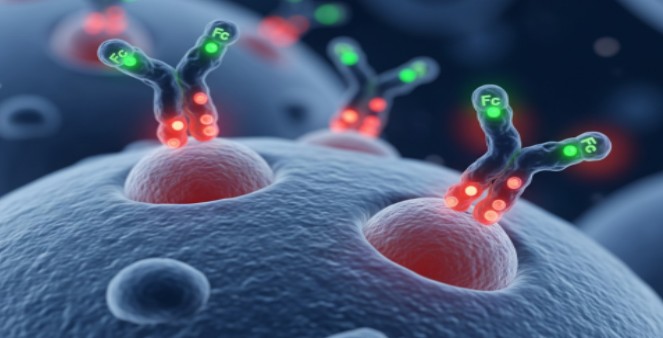Our body’s immune system is like a defense system. It produces antibodies that recognize, attack, and destroy harmful invaders in the body, such as viruses, bacteria, pathogens, etc. However, in autoimmune disease, the immune system mistakenly attacks its own healthy cells and tissues. It becomes difficult for the immune system to distinguish between foreign invaders and the body’s own cells. As a result, this leads to inflammation, tissue damage, and organ malfunction.
The common causes of autoimmune disease are:
- Genetic factors
- Exposure to a toxic environment
- Hormonal imbalances
- Poor lifestyle and diet
- Gut microbiome imbalance
Common autoimmune diseases include:
- Rheumatoid arthritis
- Type 1 diabetes
- Lupus
- Multiple Sclerosis
- Hashimoto’s thyroiditis
- Psoriasis
Autoimmune diseases involve complex immune mechanisms that need to be studied for proper diagnosis and research. Here is where secondary antibodies come into play.
What are Secondary Antibodies?
Secondary antibodies bind specifically to primary antibodies. Primary antibodies recognize and bind to antigens; secondary antibodies don’t target the antigen itself. Instead, they attach to the Fc region of primary antibodies. This binding amplifies the signal and makes it easier for researchers to detect even small amounts of antigen in a biological sample.
For instance, researchers use an alkaline phosphatase secondary antibody in various immunoassays, such as ELISA, Western blotting, and immunohistochemistry, to visualize and quantify immune responses.
This secondary antibody is conjugated to an enzyme – alkaline phosphatase (AP) – that produces a detectable signal when it reacts with a suitable substrate. The signal is usually a color change or a luminescent signal.
It helps researchers identify the presence and intensity of target antigens associated with autoimmune disorders, and to diagnose and understand the disease mechanism.
Role of Secondary Antibodies in Autoimmune Disease Research
Detect Autoantibodies
In autoimmune diseases, the immune system produces autoantibodies that attack the body’s own proteins and cells. Detection of these autoantibodies is crucial for proper diagnosis and study of autoimmune diseases.
Secondary antibodies help scientists identify these autoantibodies in blood or tissue samples.
For example, researchers use anti-rabbit secondary antibodies in laboratory tests like ELISA (Enzyme-Linked Immunosorbent Assay) to detect human autoantibodies.
In this process, the secondary antibody binds to the primary antibody that has attached to the autoantigen. Since they carry enzymes like alkaline phosphatase (AP) or horseradish peroxidase (HRP), they produce a visible color or light signal. This helps scientists measure the amount of autoantibody present in the sample.
This helps researchers detect diseases such as lupus, rheumatoid arthritis, or type 1 diabetes at an early stage.
Immune Complex Imaging
In autoimmune diseases, the body often forms immune complexes. These clusters are made up of antigens and antibodies. These complexes can deposit in tissues and further lead to inflammation and damage. For instance, in lupus, immune complexes often accumulate in the kidneys or skin.
Researchers use immunofluorescence or immunohistochemistry (IHC) techniques to study these complexes. Here, secondary antibodies conjugated to fluorescent dyes or enzymes are used to visualize the location of immune complexes in tissue samples.
Western Blot Analysis
Western blotting is a technique used to identify specific proteins in a sample. In autoimmune disease research, it helps detect proteins that are targeted by autoantibodies.
After the proteins are separated on a gel and transferred to a membrane, primary antibodies bind to their specific target proteins. Then, secondary antibodies are applied. Since they are linked to an enzyme like alkaline phosphatase, they produce a detectable signal (such as color or light) when the substrate is added.
This process makes it easier to confirm which proteins are being attacked by the immune system. Moreover, this helps researchers understand disease mechanisms.
The Bottom Line
Now that you know how secondary antibodies help in autoimmune disease research, what are you waiting for? Find a reliable source to buy secondary antibodies to get accurate and reproducible results.

